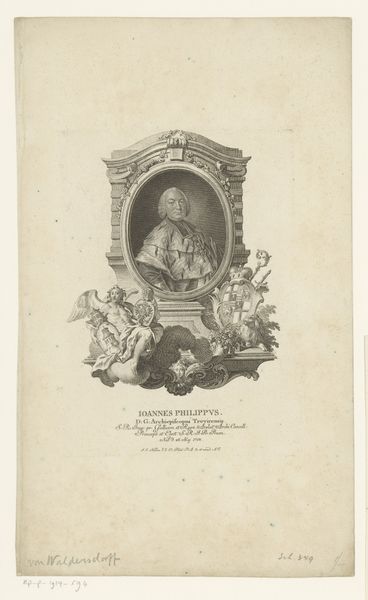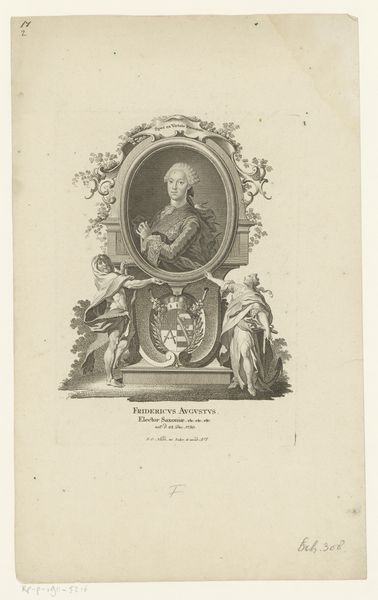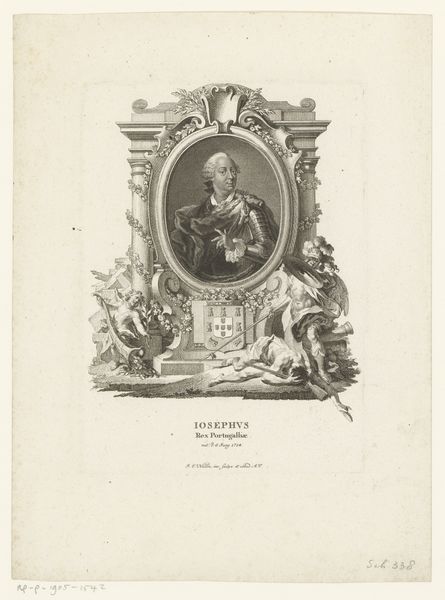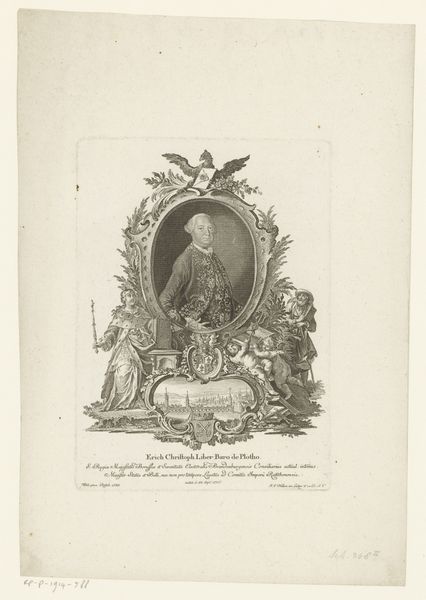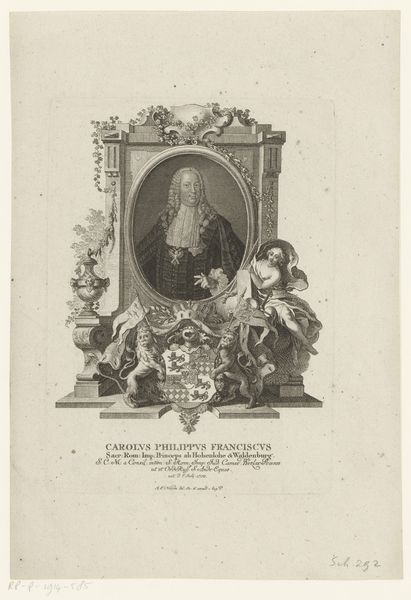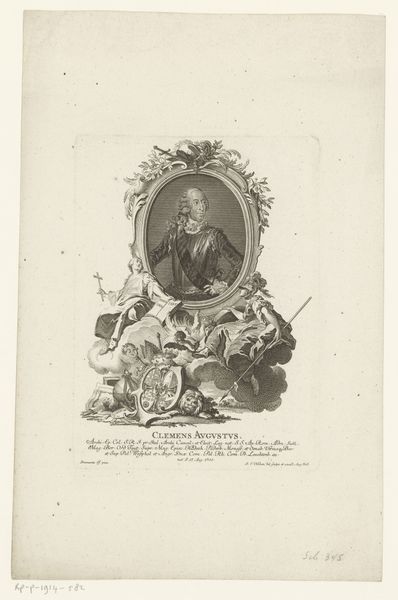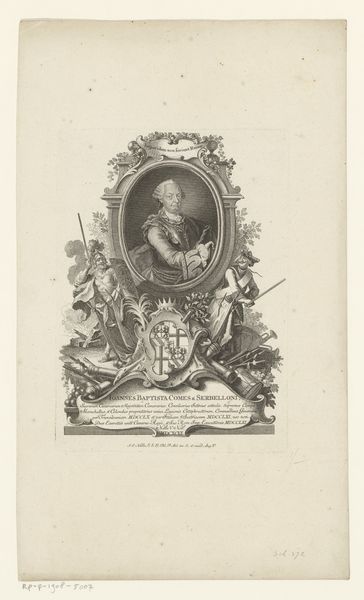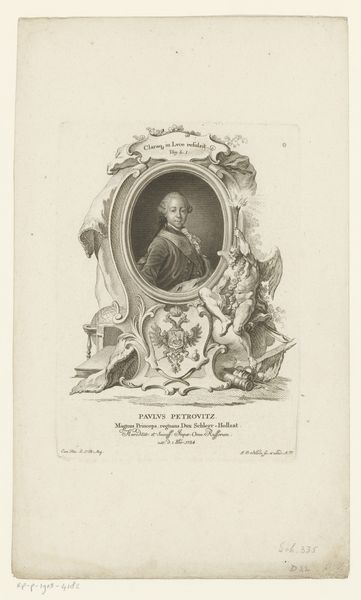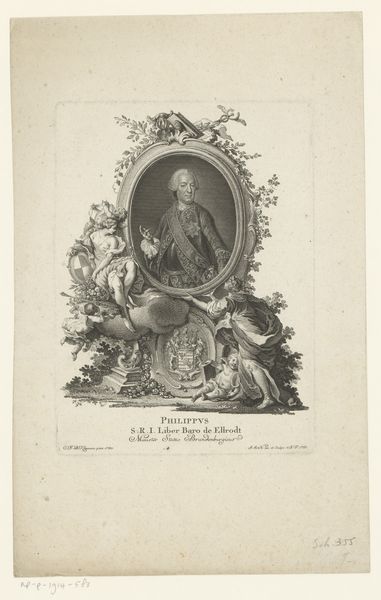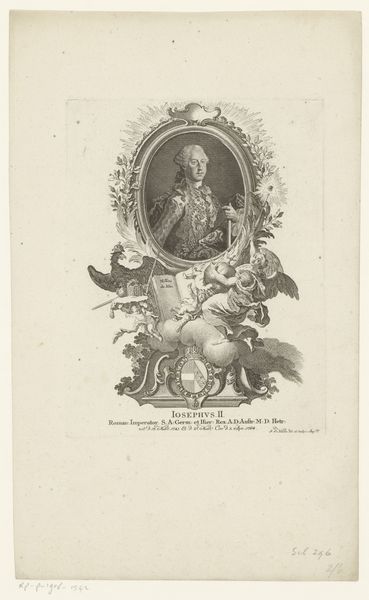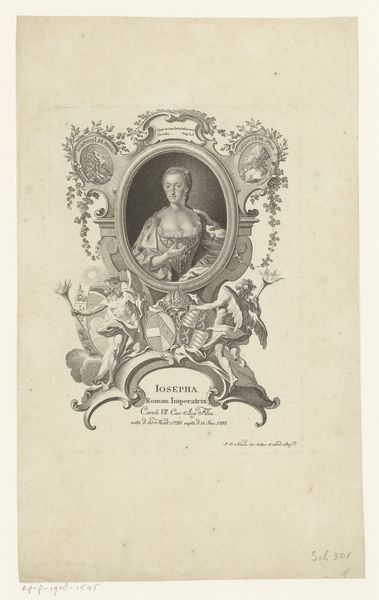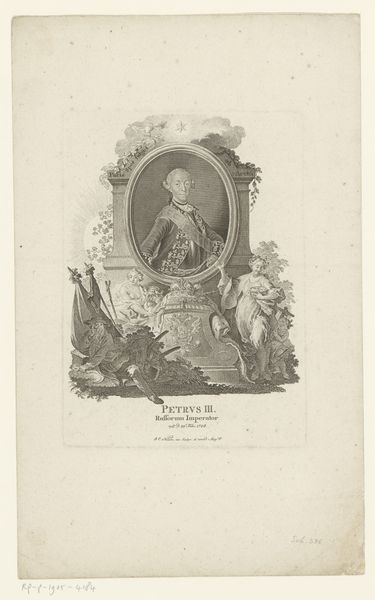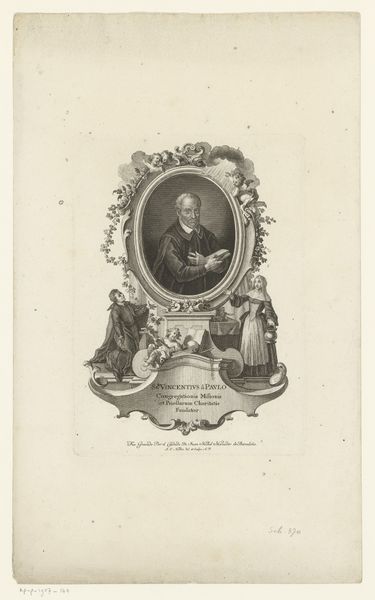
print, engraving
#
portrait
#
neoclacissism
# print
#
old engraving style
#
orientalism
#
history-painting
#
engraving
Dimensions: height 228 mm, width 164 mm
Copyright: Rijks Museum: Open Domain
Editor: This engraving, dating from the late 18th century, depicts Ahmed İbrahim Resmî, attributed to Johann Esaias Nilson. The frame, a decorative oval, creates a regal feel. What statements about power dynamics do you see present here? Curator: The portrayal of Ahmed İbrahim Resmî, an Ottoman diplomat and author, through the lens of European Neoclassicism and Orientalism tells us a great deal about 18th-century intercultural relations and how different societies perceived one another. What I notice most is how Nilson used the visual language to construct and negotiate power. Editor: Could you explain that further? Curator: Certainly. Think about why Resmî is presented in an oval frame reminiscent of European aristocratic portraiture. This stylistic choice suggests an attempt to elevate his status and bridge cultural gaps for a European audience. Yet, the Orientalist elements also risk exoticizing him, casting him as an "other" within the familiar frame of European art. How might this have shaped public opinion about Ottoman figures in Europe? Editor: I suppose it's a balancing act. The piece elevates Resmî, yet also reinforces the divide. The "othering" through details like the Turkish crescent could create an image of both admiration and distance. Curator: Precisely! It exposes how visual representation is a critical tool in shaping perceptions. We have to be hyper aware of how social, cultural, and institutional histories play a vital part in viewing a piece such as this. Editor: This gives a much richer context for me to interpret not only the art itself but the historical implications it represents. Thanks for pointing this out!
Comments
No comments
Be the first to comment and join the conversation on the ultimate creative platform.
